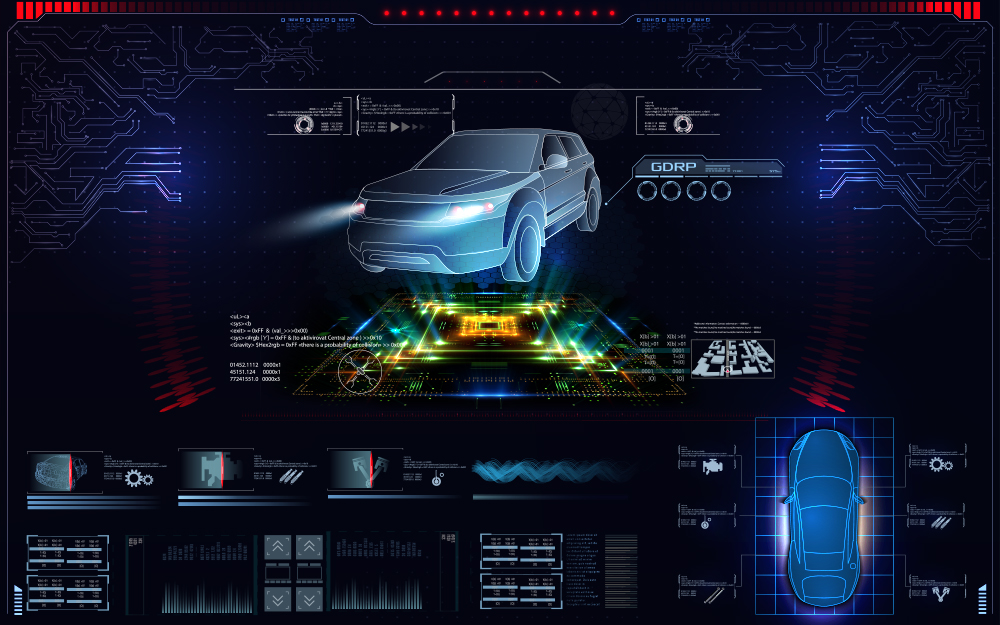
21st-century auto technology is undergoing a massive digital transformation that has been labelled the CASE revolution due to cars becoming more Connected, Autonomous, Shared, and Electric. Vehicles now come with complex and efficient interconnectivity as well as integrated systems, such as infotainment, long-life batteries, and ultra-fast 5G networks. By leveraging a myriad of leading-edge technologies, car manufacturers are pushing the boundaries of mobility with never-before-seen functionality.
Vehicle automation in particular has been a focal point for automakers with self-driving cars now capable of performing most driving tasks, providing drivers with unprecedented convenience. Level 3 automated vehicles that can steer, accelerate, and brake on their own under certain conditions are presently being rolled out. This is a significant leap beyond levels 1 and 2 vehicles which offer driver assistance and Advanced Driver-Assistance Systems (ADAS) but still require steering and constant monitoring. Level 4 vehicles that can perform all driving tasks under certain conditions are currently in the developmental phase but are projected to find broader implementation by 2024 according to IDC.
Self-driving cars are fully loaded with electronic systems supporting an infrastructure, essentially making them mobile data centers that require an immense amount of computing power. The challenge automakers now face is creating data-storage subsystems that can handle advanced applications and meet automotive constraints. Semiconductors that have long powered the smartphone industry are currently being adapted into auto-grade memory and integrated into autonomous vehicles. With their increasing storage capacity and speeds, these tiny but powerful chips are now crucial for self-driving vehicles, creating a massive demand for NAND and DRAM in the global automotive market.
What makes self-driving possible?

Self-driving cars use sensors such as LiDAR, RADAR, Ultrasonic, and high-resolution video cameras to detect objects and signs, including vehicles, traffic lights, lane markings, pedestrians, and road edges, thereby creating a map of its environment. Vehicle-to-everything (V2X) technology enables the vehicle to communicate with everything nearby, including other vehicles, infrastructure, networks and pedestrians to further help construct this virtual map. Artificial Intelligence (AI) in the form of electronic control units (ECUs) then process and interpret all the sensory input and data before sending instructions to actuators that steer, brake, and accelerate as required. Sensors, V2X and AI technology all interact seamlessly together making self-driving vehicles a reality.
DRAM and NAND leading the smart car revolution

The advanced technology embedded in self-driving cars require enhanced memory solutions due to the mission-critical nature of the applications and the immense amount of required storage. As people’s lives are on the line, there is no margin for error. This means auto-grade memory must be more reliable, faster, and robust than memory used in smartphones or laptops. Additionally, with self-driving cars projected to consume 5-20 TB per day per car, memory capacity must be increased to meet automotive needs.
To meet automotive-grade memory requirements LPDDR5 originally designed for mobile is being enhanced for self-driving vehicles, due to its many advantages including high density, performance, and endurance. LPDDR5 is being adapted for much larger dashboard displays to manage increasingly sophisticated navigational images and the control area of cockpit units. The digital cluster, front and rear sensors, and driver-monitoring system utilizing in-cabin cameras also require auto-grade LPDDR5.
High-capacity NAND flash memory, another key smartphone component, is playing an integral role in automotive applications and systems owing to its robust structure and multi-terabyte storage capabilities. Auto-grade NAND enables data capture and permanent storage of accidents in real-time as well as self-driving functions such as vehicle proximity alert, auto-headlights, speed regulation, emergency braking, lane integrity, and blind spot monitoring.
Meeting smart car industry standards

According to the U.S. National Highway Traffic Safety Administration (NHTSA), of all serious motor vehicles crashes, 94% were due to human error. Self-driving vehicles not only offer more convenience but the ability to reduce crashes, prevent injuries and save lives. To ensure driver safety, automotive-grade memory must meet stringent quality standards that ensure memory chips are error free and can be relied upon even in extreme temperatures and dynamic conditions.
A key standard established by the Automotive Electronics Council (AEC) is AEC-Q100, a failure mechanism based stressed test qualification that guarantees a certain level of reliability and longevity for integrated circuits (IC). Stress testing of memory components concerns not only in-vehicle usage but the design and manufacturing process to ensure the highest quality product. To meet AEC-Q100 requirements, chip integrity is measured through a battery of stress tests involving temperature, vibration, and conditions such as dust and condensation. Only after passing all tests is a component certified auto-grade.
SK hynix has dedicated itself to achieving AEC-Q100 qualification by building up its process from the R&D stage to manufacturing using automotive industry standards. One such standard is IATF-16949, the Quality Management Systems standard for the automotive industry, which emphasizes defect prevention and reduction of variation and waste. Another industry standard SK hynix follows is ISO-26262, a mandate to develop a functional safety process to reduce the possibility of electrical malfunction. Additionally, Automotive Software Performance Improvement and Capability Determination (ASPICE) is an established framework used by SK hynix for measuring process quality.
Keeping pace with automotive memory needs

With the advancement of self-driving cars, data storage has become a critical component of automotive design. This has placed a precedence on high data retention, speed and continual data integrity for the systems that make autonomous cars possible. As a developer of advanced, high-quality memory products, SK hynix stands at the forefront of this movement and is enhancing DRAM and NAND for the automotive market. In doing so SK hynix has positioned itself as a leader in the new e-mobility era and is committed to the ultimate goal of delivering safety and convenience to all drivers.




